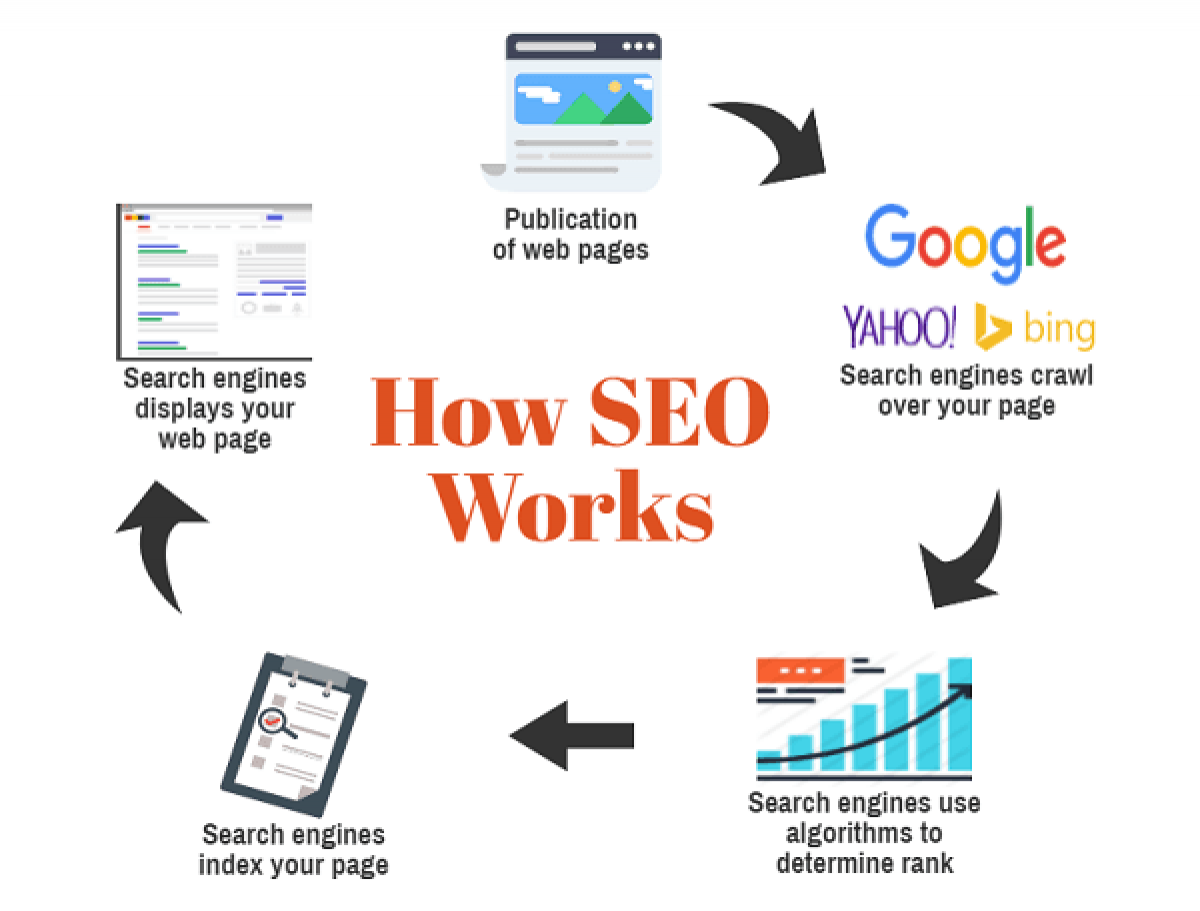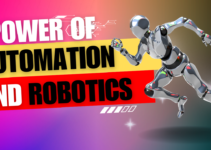As we propel forward into the 21st century, the integration of Artificial Intelligence (AI) into our everyday lives and jobs has become a pivotal component in shaping our societal structure and economy. The concept of AI, often envisioned in fantastical terms, has evolved from mere fiction into an intricate tapestry of potentiality that is now fundamental to industries across the spectrum. The aim of this exploration is to enlighten the reader about not only what AI is and how it works, but also how it has redefined traditional jobs through automation. From the historical chronology of AI to its current applications in various industries, the picture of its impact on job markets, and a projection of future trends, this comprehensive overview seeks to unmask the complex world of AI and job automation, providing a more rounded viewpoint on its benefits, challenges, ethical considerations, and the regulatory provisions that govern it.
Understanding AI and Job Automation
Understanding AI and Job Automation
Artificial Intelligence, commonly referred to as AI, is a branch of computer science focused on creating intelligent machines capable of simulating human intelligence and behavior. AI works by integrating various subsystems which handle different aspects of intelligence such as learning, reasoning, problem-solving, perception, and linguistic intelligence.
Two primary techniques used in AI are Machine Learning and Deep Learning. Machine learning is a subset of AI where computers gain the ability to learn and improve from experience without explicit programming. It involves algorithms that allow computers to learn from data input, and then make predictions or decisions. Deep learning is a further subset of machine learning, which utilizes artificial neural networks to simulate the workings of a human brain, and is responsible for advancements in image and voice recognition technologies.
In the context of the workplace, AI software and robotics are an integral part of job automation. AI can be applied in various tasks that require data processing and decision making. It is especially useful for repetitive tasks which can be automated to reduce human error and increase efficiency.
Robotics, on the other hand, is a field that combines mechanical engineering, electronic engineering and computer science to design and construct robots. Robotics can be considered as a subset of AI, that focuses on the physical implementation of intelligent agents. Robots are often used in manufacturing processes, where repetitive tasks can be automated for consistent results.
AI Application in the Workplace
The application of AI in the workplace has the potential to revolutionize various industries. In the healthcare sector, AI systems are used for tasks such as interpreting medical images, predicting disease progression, and personalizing treatment plans. In the financial sector, AI is utilized for credit decision making, fraud detection, and algorithmic trading.
However, the deployment of AI and automation in the workplace also results in certain challenges. One of the main issues is the potential for job displacement due to automation. Routine jobs that involve predictable, repetitive tasks are particularly susceptible to automation. This does not mean that those occupations will entirely vanish, but they are likely to be restructured.
The advent of AI and automation calls for proactive efforts from governments, companies, and individuals to manage the transition. This might involve retraining and reskilling workers, and revising education systems to equip people with the skills needed in an automated and AI-driven world.
Exploring Perspectives on AI in the Workplace
There’s a broad spectrum of views when it comes to AI in the workplace. To some, it’s an incredible tool for efficiency, helping businesses cut costs and spurring productivity by reducing errors. Conversely, there’s a viewpoint that sees it as a menace to jobs, with fears that robots and AI systems may outstrip human performance and cause mass unemployment.
Despite these worries, many specialists in the field note that while AI does indeed automate certain roles, it also paves the way for creating new ones. In particular, careers related to the development, management, and maintenance of AI systems and robots are flourishing. Moreover, AI is a useful tool for taking over mundane aspects of work, freeing workers to focus on more intellectually engaging and creative tasks.
All in all, AI’s effect on employment isn’t one-sided—it inherently intertwines job displacement with novel opportunities. A comprehensive understanding recognizes both the benefits and potential pitfalls that AI and automation offer the labor market.

History and Evolution of AI in Job Automation
Unraveling the Roots of AI in Job Automation
The conception of the AI age is generally traced back to a notable conference at Dartmouth College in 1956. Here, the phrase “artificial intelligence” first entered scientific parlance, and the goal to craft a machine capable of emulating human intelligence was set. This marked the initial steps into creating machines that could not only mimic human cognition but also perform tasks traditionally carried out by humans, laying the groundwork for job automation.
Early Implementations and Milestones of AI in Job Automation
In the early 1960s, AI started making inroads into industries, though in a very rudimentary form. Simple tasks such as translations and computations, previously done by human operators, were automated. One of the milestones came when AI was introduced in the automotive industry. The robot “Unimate”, assembled in General Motors, replaced humans in the dangerous task of die casting handling and spot welding, setting a precedent for the use of AI in industrial automation.
In the 1980s and 1990s, AI made significant strides, leading to increased efficiency and reduction in human errors. Companies began to realize the importance of process automation to stay competitive and reduce costs.
AI in the New Millennium: Rapid Advancements and Widespread Adoption
The 21st century has marked the most significant period so far in the history of AI and job automation. Advancements in machine learning and data analytics have allowed AI systems to ‘learn’ from data, rather than being explicitly programmed. Companies such as Google and Amazon have transformed the e-commerce industry using AI to analyze customer behavior, product preferences, and sales forecasting.
In the healthcare sector, AI has been used to automate administrative tasks and improve patient care. Radiology, for instance, has seen the implementation of AI-based systems that can diagnose diseases with remarkable accuracy. In the manufacturing sector, AI continues to shape processes by automating routine tasks, improving production efficiency and safety.
In the banking and finance sector, AI has revolutionized processes by automating tasks like credit decisions, risk management, and customer service.
A Glimpse Into AI’s Role in Job Automation and Its Emerging Trends
In this digital age, we’re witnessing the pervasive infiltration of AI across various industries, altering traditional roles and responsibilities in significant ways. Business efficiency is getting a considerable boost as AI-driven automation takes over mundane and predictable tasks. Conversely, we’re also seeing the birth of new job roles like AI experts and data scientists, which require specialized skill sets.
Moving beyond the realms of conventional automation, AI now enables algorithms to make accurate predictions, generate valuable insights, and facilitate proactive solutions. A prominent trend currently shaping the AI automation sphere is ‘intelligent automation’. This fusion of machine learning and automation results in innovations like neural networks and deep learning models which continuously adapt to changing data, reducing the need for human intervention.
While there are reasonable apprehensions about job displacement and ethical aspects, the advancement of AI in job automation is seemingly relentless. As AI continues to evolve, it constantly sets new standards in efficiency, productivity, and creativity, guiding us into an era where intelligent machines collaborate seamlessly with humans.
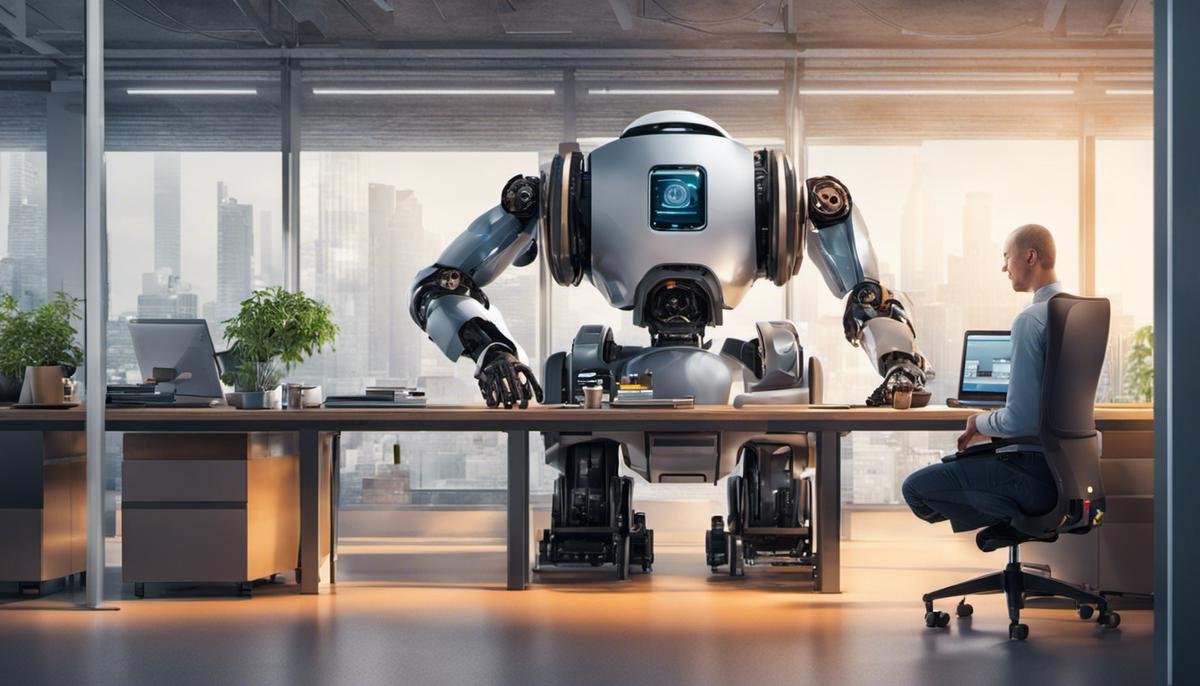
Current Applications of AI in Various Industries
The Revolution of AI in Healthcare
The healthcare sector is undergoing a major transformation owing to the implementation of Artificial Intelligence. AI’s uses in this industry range from interpreting medical images and predicting potential health issues, to facilitating personalized treatment approaches and automating administrative tasks. An illustrative example is Zebra Medical Vision, a technology which employs machine learning algorithms for radiology readings to identify a plethora of medical conditions. Moreover, AI can predict the probability of chronic diseases such as diabetes or cardiovascular conditions. However, alongside numerous benefits, the use of AI in healthcare also sparks certain concerns like potential misdiagnosis, challenges relating to data privacy and security, and the risk of human job loss in the sector.
AI in Finance
In the realm of finance, AI helps detect fraudulent activities, automate digital assistants, and manage wealth. Some credit card companies use AI to study spending patterns and identify unusual activity. Also, robo-advisors like Wealthfront and Betterment use algorithms to manage and optimize clients’ investments. However, reliance on AI for financial decisions can often lead to errors, and it could potentially displace certain jobs, notably in sectors such as banking and stock trading.
AI in Manufacturing
In manufacturing, AI is employed to optimize production, detect faults in the assembly line, and manage inventory. For instance, General Electric uses AI to predict when industrial machinery might need repairs. AI technologies also help in designing products by simulating a variety of scenarios and stress factors. However, increased automation in manufacturing often ignites fears around job displacement, particularly for roles that mainly involve routine tasks.
AI in Transportation
AI has revolutionized the transportation industry with its applications in autonomous vehicles, dispatching and routing, and predictive maintenance. Companies like Tesla and Waymo are developing self-driving vehicles using AI, which could potentially reduce traffic accidents and improve fuel efficiency. Nevertheless, the wider deployment of AI in transportation could result in job losses for drivers and other similar roles, and there are also safety concerns with autonomous vehicles.
AI in Agriculture
Agriculture too is harnessing AI through precision farming, disease detection, and yield prediction. AI companies such as Blue River Technology use machine learning and computer vision to spray herbicides intelligently, reducing harmful chemicals in the environment. However, wider implementation of AI in agriculture also bears the potential concern of job losses, particularly for farmers and laborers.
AI in Retail
In retail, AI is already used in marketing and sales, customer service, and inventory management. Amazon’s AI, for example, personalizes customer experiences by recommending products based on previous purchases and browsing history. On the downside, AI-driven automation in retail could lead to job losses, particularly in physical stores and customer service.
Artificial Intelligence (AI) possesses immense potential that significantly improves efficiency and productivity across various sectors. However, concerns surrounding job displacement, accuracy, safety, and data privacy are unavoidable. It is, therefore, critical for stakeholders – including companies, governments, and individuals alike – to strike a balance between leveraging AI’s benefits and mitigating its potential negative effects.

Impact of AI on the Job Market and the Economy
The evolution of AI has notably upset the job market, acting as a turbulent force inducing changes in job roles and the creation of jobs itself. Alongside this, there has also been a marked shift in the skills set requirements. Like any innovation, AI has its advantages and disadvantages. On the bright side, the new efficiencies brought by AI help companies become more competitive, stimulating economic growth. On the flip side, AI could also result in job losses as certain roles succumb to automation.
Beneficiaries and Casualties of AI’s Rise
The benefit of AI and automation isn’t distributed equitably across all sectors or demographics. The sectors that most benefited are those involving high levels of data usage, such as technology and finance. Roles that require interpretation of complex data, like data scientists, have also been in high demand, as have roles that build and oversee AI applications.
However, the rise of AI has led to challenges for those employed in low-skilled jobs or sectors that can be easily automated, resulting in widespread fear of unemployment. Blue-collar jobs or jobs involving routine, rule-based tasks are most likely to be affected. This includes jobs in manufacturing, packaging, transportation and even some service-sector jobs, such as call center operators and retail sales assistants.
AI and Job Creation
While AI and automation have led to job losses due to redundancy, they have also led to job creation. New job categories and industries have emerged to leverage AI’s potential. The rise of AI has created jobs in AI ethics, AI law, AI system training, data analysis, systems engineering, and more.
Artificial Intelligence also requires human oversight, leading to a surge in demand for AI specialists who can understand AI algorithm output, foresee potential misuse, and make intelligent corrections. Individuals and institutions are also needed to address the ethical, legal, and societal impacts of AI.
Shifting Economic Paradigms
Economic paradigms are also shifting, with a transition from labor-intensive industries to tech-driven industries. Traditional measures of economic growth are being challenged, with new metrics centered around data, technology, and AI gaining importance.
The economic landscape is becoming more knowledge-intensive, with physical labor being less determinative of a country’s wealth. Countries that can harness AI’s potential will be better positioned to exploit future economic opportunities, while those that cannot may face economic oblivion.
The Robots vs Humans Debate
The debate about robots replacing humans isn’t new—it dates back to the Industrial Revolution. What makes this era different is the rapid pace of AI advancement and the breadth of its applicability. Robots are no longer limited to doing repetitive tasks; they can now make decisions, learn from experience, and predict future trends.
However, for all their sophistication, robots can’t replace the nuance and texture of human intuition, creativity, and emotional intelligence. Many jobs in healthcare, education, and social services, for example, will continue to require a substantial human touch. The future job market will likely be a blend of AI-powered automation and human-led tasks.
Rethinking the Job Market and Economy with AI
Artificial Intelligence is revolutionizing the job market and the economy as we know it. This transformative technology has created a paradigm shift, making some job roles redundant while birthing new ones. The focal point in the future will be steering this transformation gracefully, reducing potential drawbacks and capitalizing on the benefits it offers to everyone.
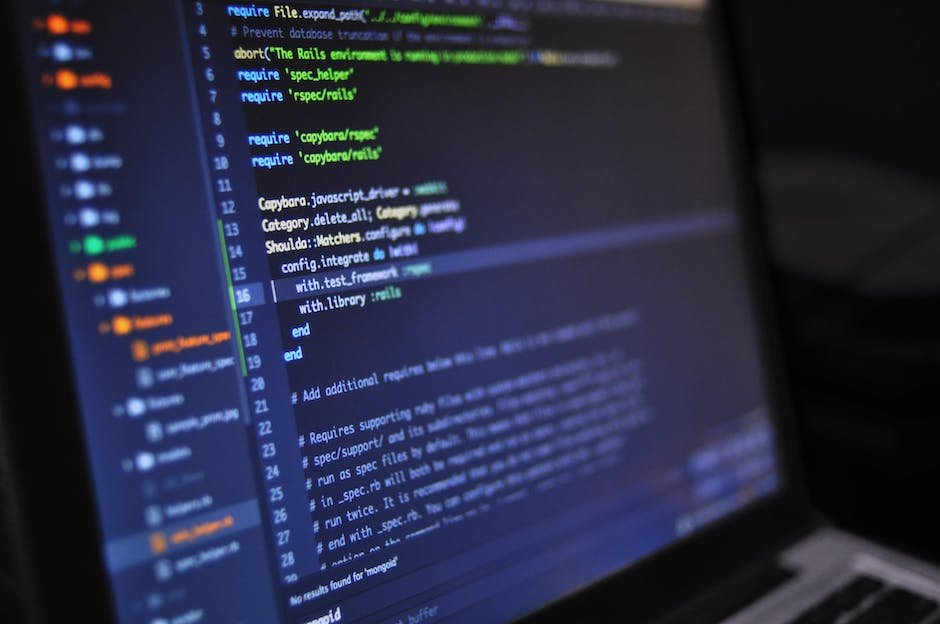
Future Prospects: AI and Workforce
Forecasted Progress in AI and It’s Application
Advancements in AI are expected to continue at a fast pace, stimulated by persistently progressive research and development in the field. Anticipated breakthroughs include the rise of self-learning AI and enhancements in cognitive technologies that can further refine and elevate work processes. Additionally, the frameworks of machine learning and deep learning are set to become more sophisticated, empowering AI to comprehend, absorb, and implement new tasks more efficiently. It is also predicted that AI will become more personalized, paving the way for more intuitive and natural interactions.
Industries Affected by AI and Automation
Automation has started to influence a multitude of sectors, with some expected to feel a greater impact. The manufacturing industry is projected to be at an even higher risk given the repetitive nature of tasks that can be easily automated. The transportation and logistics sector, owing to advancements in self-driving tech, is another possible area of massive impact.
The financial sector is also predicted to change significantly with AI handling jobs that involve data analysis and prediction such as investment forecasting, risk assessment, and fraud detection. Even traditionally ‘safe’ sectors like healthcare could see AI applications in diagnostic procedures, patient care, and even surgery. The legal and education sectors could also experience transformation with the integration of AI in case research or personalized learning.
AI and The Workforce: Adaptation and Benefit
While AI and automation could lead to a significant shift in the job market, it isn’t all negative. As certain jobs become automated, new roles that we cannot currently foresee will likely be created, much like was the case during the Industrial Revolution. It is also important to remember that AI and automation are tools which can enhance productivity, efficiency, and even job satisfaction, reducing repetitive tasks and allowing workers to focus on more complex and fulfilling duties.
Workers can adapt to these innovations by reskilling. With the rise of AI, there’s an expected increase in demand for individuals skilled in AI and machine learning. Careers in data analysis, AI programming, robotics, and computational linguistics might see a sharp increase. Learning skills that AI cannot autonomously perform, such as complex problem solving, creativity, emotional intelligence, and critical thinking, could help maintain job security.
Apart from reskilling, workers could consider ‘upskilling’, which involves leveling up skills within one’s current job role to adapt to new technologies or methodologies brought around by automation.
Consideration should also be given to ‘hybrid’ roles, which combine specialist skills with basic understanding of AI principles. For instance, a doctor who is also able to work with AI diagnostic tools, or a teacher who can incorporate AI software into their teaching strategy.
As advancements in AI technologies continue to redefine our daily life, the employment landscape metamorphoses in its wake. With artificial intelligence becoming more integrated in various sectors, there’s a surge in demand for ethical management of AI. This rising call for ethical governance not only makes AI operations transparent and reliable, but also unveils a novel avenue for job roles and specialization areas.

Ethical Considerations and Regulation of AI
Addressing Ethical Issues in AI and Job Automation
An emerging concern in AI implementation and job automation is maintaining data privacy. The vast volumes of data that power AI systems can inadvertently breach confidential boundaries, putting privacy at risk. Although techniques like data encryption and anonymization are in place, their potential to fully protect sensitive information is doubted. Misuse of data can lead to severe undermining of public trust in AI systems.
Besides data privacy, job displacement as a result of automation presents a potent ethical issue. With AI-powered software and robots replacing human tasks for efficiency, there could be a significant increase in job losses. This scenario can exacerbate socioeconomic disparities and induce social unrest. Hence, the debate swings often towards ethically appropriate strategies and policies. Can the workforce be retrained? Or should there be a creation of new job opportunities? These proposed solutions form the crux of ethical discussion in the era of job automation.
Regulatory Challenges Surrounding AI
The regulatory framework for AI and job automation is a complex, evolving landscape due largely to the rapid advancement of the technology. Current laws governing AI applications are inconsistent and vary by jurisdiction, creating complexity for organizations operating across borders.
One challenge involves the nature of AI itself, which learns and evolves over time. Ensuring accountability when errors occur can be difficult, as it’s complicated to trace back fault within a system that is constantly learning and changing. Determining legal liability can also be problematic, especially when there’s no human directly controlling the AI system at the time of the incident.
Employment Rights in an Age of Automation
With the increased adoption of AI, employment rights become a crucial discussion. Regulation must ensure that fair employment practices extend to AI’s implementation in the workplace. Workers displaced by AI should have access to adequate support measures, including retraining programs to develop new skills and ways to participate in the digital economy.
There’s also the issue of gig work spurred by AI developments. Many individuals depend on gig work for their income, yet current labor laws often do not extend the same protections to gig workers as they do to traditional employees. There’s a need to redefine employment categories and rights in the era of AI and job automation.
All these ethical dilemmas and regulatory challenges surrounding AI and job automation underline the need for a rigorous, comprehensive and ongoing discussion among industry leaders, lawmakers, and the public. Policymakers need to strike a balance between harnessing the potential benefits of AI and automation and mitigating the social, economic, and individual risks they pose. It is vital that the debate is ongoing, to keep up with evolving technologies and their impacts on work and society.
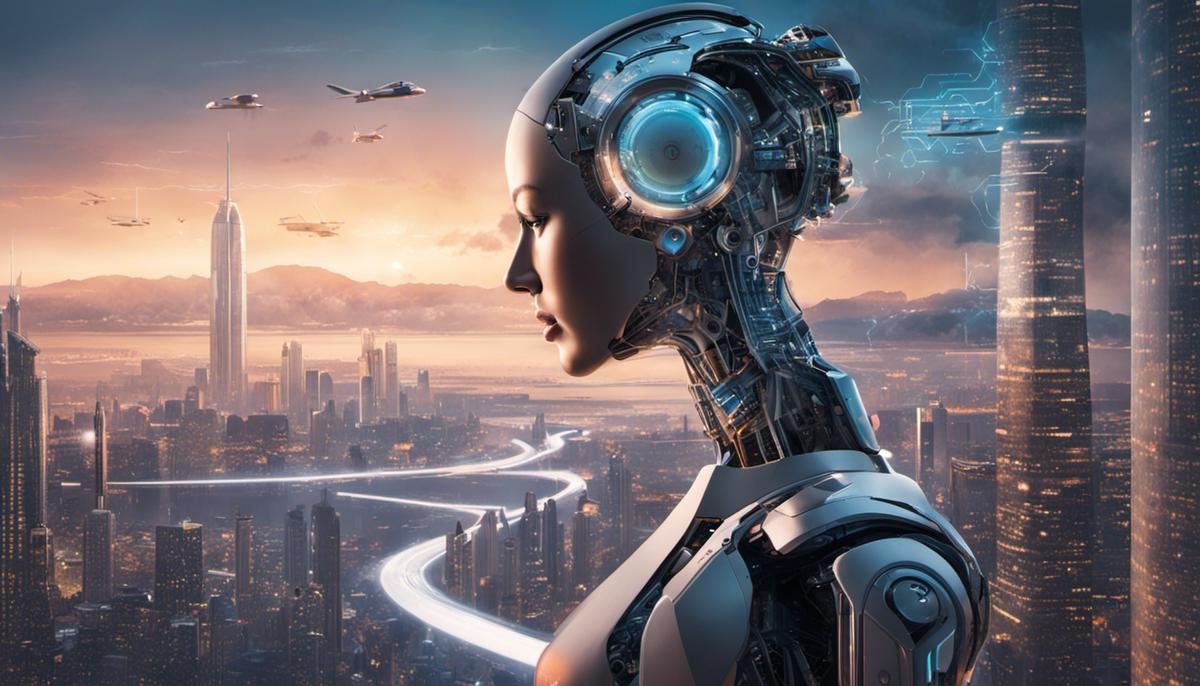
Understanding and navigating the broad terrain of Artificial Intelligence and job automation is not just a challenge for technologists and policymakers; it’s a pivotal task for us all. The progressive integration of AI into our industries poses both unprecedented opportunities and significant ethical conundrums. While AI continues to streamline functions in healthcare, finance, manufacturing, and transportation, we must also critically analyze potential job losses, shifts in the economy, and the evolving regulatory environment. In contemplating the future, it’s essential to foster resilience and flexibility to adapt to changes and elevate our skillset to be parallel with advancing technologies. While we move forward, the pathway remains clear: to mold AI as a tool that not only enhances our capabilities and efficiencies but one that also respects our ethical and societal values.
